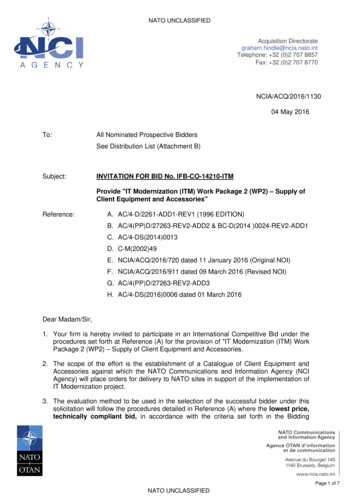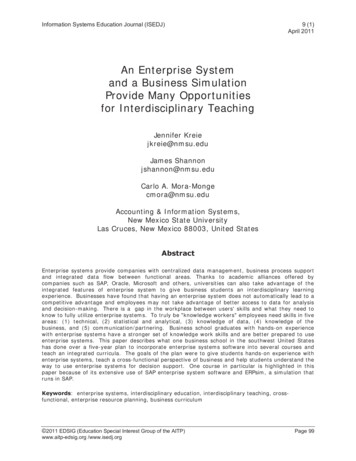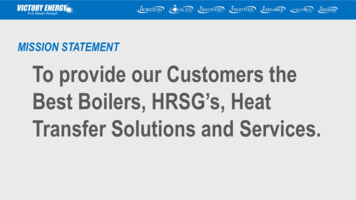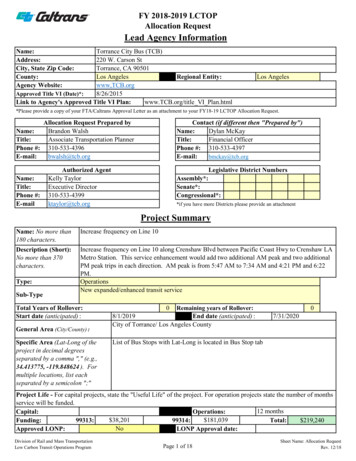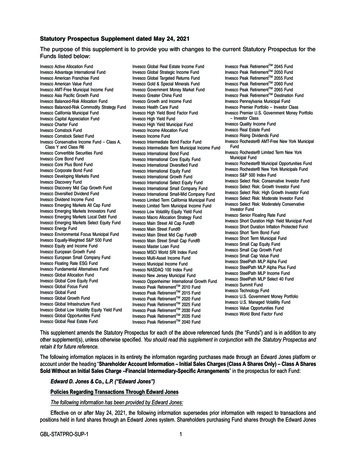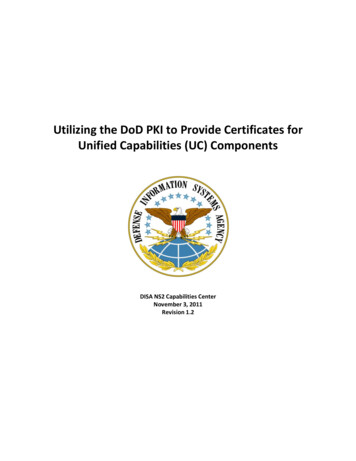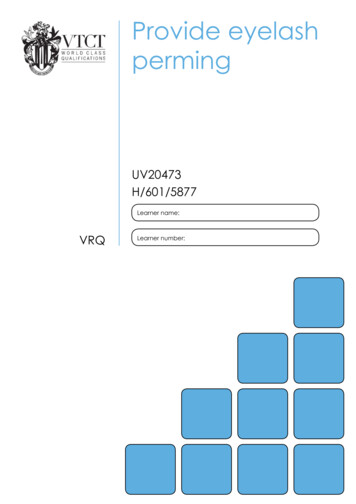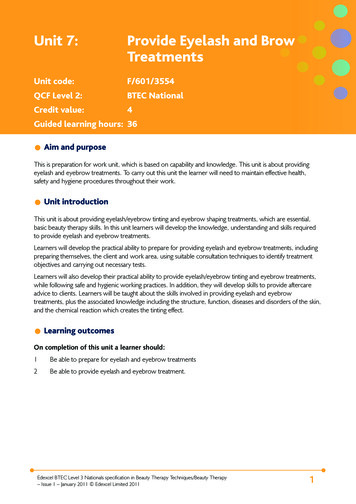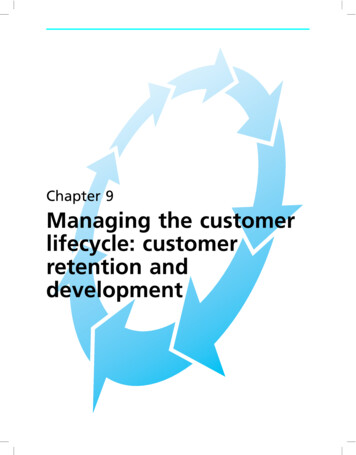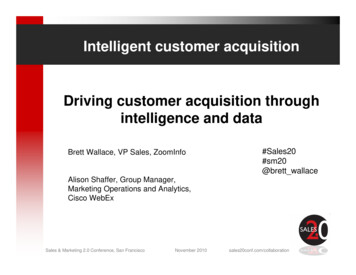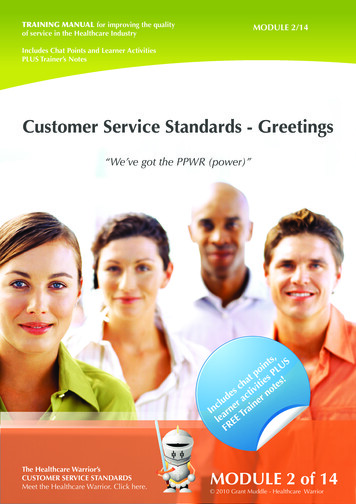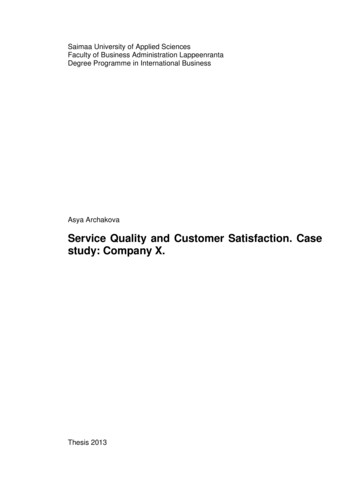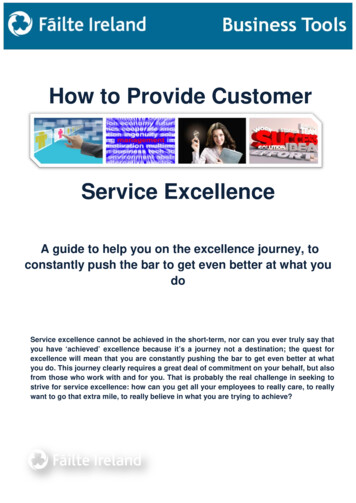
Transcription
How to Provide CustomerService ExcellenceA guide to help you on the excellence journey, toconstantly push the bar to get even better at what youdoService excellence cannot be achieved in the short-term, nor can you ever truly say thatyou have ‘achieved’ excellence because it’s a journey not a destination; the quest forexcellence will mean that you are constantly pushing the bar to get even better at whatyou do. This journey clearly requires a great deal of commitment on your behalf, but alsofrom those who work with and for you. That is probably the real challenge in seeking tostrive for service excellence: how can you get all your employees to really care, to reallywant to go that extra mile, to really believe in what you are trying to achieve?
How to Provide Customer ServiceExcellenceThis guide is intended to help you strive for service excellence in your business and is prepared in line withthe service excellence model. The content here will help you to reflect upon what you do already, and fromthat you will find areas where you can enhance your existing approach.1. The External Customer . 31.1 Commitment to Service Excellence . 41.2 Get as close as you can to your customers . 51.3 Design your products and services to meet defined needs and expectations . 61.4 Deliver those products and services in a way that consistently exceeds expectations. . 61.5 Introduce informal and formal feedback systems . 72. The Internal Customer. 92.1 Clearly Define Roles and Responsibilities . 92.2 Provide appropriate and continuous training for all employees . 92.3 Create a working environment which engages employees to the fullest extent . 102.4 Measure employee satisfaction at regular intervals . 103. Standards of Performance . 113.1 Developing operational standards . 123.2 Implementing the standards . 153.3 Evaluating the standards. 153.4 Improving the standards . 174. Conclusion . 172
The guide is based on the service excellence model shown:The s ofPerformanceThe InternalCustomer1. The ExternalCustomerIt is perhaps a cliché today to talk interms of achieving total customer focusbut if you want to strive for serviceexcellence that is precisely what youmust attain. A good reflection point asyou start to analyse this particularprocess is to ask yourself somethough-provoking questions such as:These questions might seem to beverging on ‘navel gazing’, but suchissues are vital if you really want to setyour business apart from others interms of service quality. There aremany average businesses in all sectorsof tourism, but the number of trulyoutstanding companies is few.Would your customers miss yourbusiness if it were no longer around?Therefore, the journey to excellencerequires you to ‘think’ as much as itdoes to ‘do’, and reflecting on whatmakes (or can make) your businessspecial and unique is not time wasted,but time saved because based on theanswers you find to such questions,you will do more of the right things infuture.What would they miss about you?Would they easily find a replacementoffering?Does interacting with your businessmake a real (and noticeable) differenceto their lives?Why do they choose you over others orothers over you?In terms of practical steps you can taketo achieve total customer focus,consider the following points:3
1.1 Commitment to Service ExcellenceThe starting point in any attempt to‘rise above the norm’ is to demonstratea real commitment to that aim.Undoubtedly, you are committed tothat end, but are each and every oneof your employees equally asdetermined, no matter how many youhave? Of course, commitment levelswill vary but you cannot tolerate a!situation where you have some peoplewho are truly committed to serviceexcellence and others who caremoderately, or worse still, little at all.If you find this is a problem in yourbusiness, then you need to addressthat concern urgently. Some things youcan practically do here:Sit with your employees to discuss what your business and service goals are,how they can contribute and what the likely benefits are to all concerned fortrying to be better at what you do.!Together with them, develop a ‘Service Promise’, or similar, which captures ashared vision of what you all want to achieve in terms of service quality.Communicate that promise widely to employees and customers.!Allocate individual responsibilities for elements of the drive towards serviceexcellence. For example, you might appoint an ‘ideas team’ which would explorethings that you could do to enhance service, or you could have another groupworking on how to reduce complaints in the business. No passengers allowed onthe journey.!Set clear service goals (collective and individual) to provide tangible targets“Quality in aservice orproduct is notwhat you putinto it. It iswhat theclient orcustomer getsout of it.”Peter Drucker,managementconsultantrelated to your Service Promise; for example, you could have a target to reducecomplaints, increase repeat business volumes, raise customer satisfaction levelsand so on. And yes, by all means reward people when those challenging targetsare achieved, but don’t fall into the trap of rewarding your employees for whatthey should be doing anyway – only above the norm performance should berewarded.!Discuss service quality at every meeting or briefing you ever have, make it thenorm to talk about the Service Promise, and don’t only focus on service issueswhen something ‘goes wrong’. Talk a lot about the journey, the promise, thegoals, the achievements – make it part of everyday life.Finally on this point, never tolerate individuals who do not share your commitmentand that of the wider team. By all means coach and support them to see if they canimprove, but do not allow them to tarnish the efforts of others indefinitely.4
1.2 Get as close as you can to yourcustomersThis again sounds like an obvious pointbut service excellence demands thatyou first know your customers’ needsand expectations better than anyoneelse. Yes, some common needsare obvious, but needs by segmentare less so.“The moreyou engagewithcustomers theclearer thingsbecome andthe easier it isto determinewhat youshould bedoing.”John Russell,President,HarleyDavidson!Even harder to discern are individualneeds, but if you are serious aboutexcellence then at the very least yourregular or repeat customers will expectyou to remember their likes anddislikes. Practical things you can dohere include:Define your key customer segments and attribute an overall value to each interms of what they generate for the business. Which segments deserve mostattention?!Hold regular focus groups with customers from these segments to betterunderstand their needs.!Conduct wider online/email surveys with larger number of customers to get abroader view of needs.!Have effective feedback mechanisms, for capturing complaints, and forgathering general satisfaction data; analyse this information regularly in ameaningful way to identify areas for improvement.!Have systems for capturing and sharing the preferences of existing customers sothat you can wow them with your tailored service.It is only by taking proactive action that you can get closer to your customers and ifyou don’t do so then striving for service excellence is impossible.5
1.3 Design your products and servicesto meet defined needs and expectationsOf course, there can be challenges forsmall businesses in terms of productdevelopment,butevenwithoutspending large sums on capitalinvestment you can still enhanceyour offering. On the product side,at an absolute minimum, youshould ensure that whatever facilities!!and products you currently have are ofthe highest quality and not lookingjaded or tired. On the service side, it’soften the little things that matter, sotailoring your service to differentsegments doesn’t have to be a costlyundertaking. Some practical actionshere include:Get staff directly involved in this area. They interact with your customers everyday and they can often identify small but meaningful product or serviceenhancements.Explore what other businesses are doing, both direct competitors and even thosein other industries. However, be careful here that you don’t end up being afollower rather than a leader when it comes to new ideas.“The first stepin exceedingyourcustomer'sexpectationsis to knowthoseexpectations.”Roy H.Williams ,author andmarketingconsultant1.4 Deliver those products and servicesin a way that consistently exceedsexpectationsNo matter what your specific offeringentails, it’s how you deliver it thatreally matters. The issue of servicestandards will be addressed laterbut for the moment you shouldreflect on the mindset of your peoplewhen it comes to service delivery; arethey truly proactive and anticipative ofcustomer needs, or do they simplyreact to customer’s requests? Whatmight you do to improve on the currentsituation?6
1.5 Introduce informal and formalfeedback systemsAs touched upon earlier, achievingservice excellence is dependent uponyou truly understanding how you aredoing in terms of service quality, andacting upon that feedback to resolveproblems and enhance what you offer.Some companies pay lip service to thisarea and use token gestures such as!!!comment cards, which in reality arenever truly analysed. That is not toinfer that comment cards cannot be aneffective tool, but only as part of awider feedback system, and certainlyonly when analysed and acted upon ona daily basis. Some practical points tobear in mind here include:Employees receive informal feedback on a daily basis, how is that informationcaptured and then actioned in your business?What information do you want from your customers, what is valuable to you?Whatever combination of feedback mechanisms you use, don’t overload yourcustomers with pointless questions, or make it cumbersome for them to help youimprove.Use a mix of feedback mechanisms from telephone follow-up calls, surveys,interviews and comment cards so that you get data from all segments.As part of your thinking here, do youknow about the Net Promoter Score(NPS)? The Net Promoter Score is theresult achieved when you survey yourcustomers with the “would yourecommend?” question. The conceptwas first developed by Frederick F.Reichheld from Bain & Company whenhe was examining the issue ofcustomer satisfaction measurement. Hefound that many customer satisfactionsurveys weren’t of much use becausethey were often too long orcumbersome, with low response ratesand so on.Whilst exploring the issue, he foundthat one company, Enterprise Rent-ACar, used two simple questions tomeasure feedback: one about thequality of their rental experience andthe other about the likelihood that thecustomer would rent from the companyagain. Reichheld wondered whether itwas possible to get similar results inother industries — including thosemore complex sectors than car rentals— by focusing only on customers whoprovided the most enthusiasticresponses to a short list of questionsdesigned to assess their loyalty to acompany. He wondered whether thelist could be reduced to a singlequestion. And if it could be, whatwould that question be?It turned out that yes indeed a singlesurvey question could serve as a usefulindicator of business growth. But thatquestion wasn’t about customersatisfaction or even loyalty, or not in somany words. Instead, it was focusedon a customer’s willingness torecommend a product or service tosomeone else. Reichheld found that inmost of the industries he studied, the7
percentage of customers who wereenthusiastic enough to refer a friend orcolleague — perhaps the strongest signof customer loyalty— correlateddirectly with differences in growth ratesamong competitors.our company to a friend or colleague?”So, that’s where the NPS concept camefrom, and it’s easy to calculate. Whenyou ask the question of yourcustomers, “On a scale 0-10, howThen,whenyousubtractthepercentage of 0s to 6s from thepercentage of 9s and 10s, that givesyou your NPS score as the diagrambelow (from netpromoter.com) shows:likely is it that you would recommendUsing Customer Satisfaction as ameasure is obviously fine, but whatReichheld’s research showed was that‘satisfaction’ is not necessarily anindicator of ‘loyalty’ and it’s the latterthat actually drives business growth.The main reasons that NPS is growingin popularity as an indicator is that:It’s easy to understand and calculate;It has been shown that ‘loyalty’ is anindicator of likely future behaviour;And customer loyalty levels are shownto be correlated to business growthleve
the journey. ! Set clear service goals (collective and individual) to provide tangible targets related to your Service Promise; for example, you could have a target to
